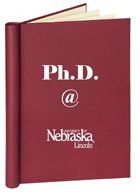Graduate Studies
First Advisor
Philip E. Johnson
Second Advisor
Melanie L. Downs
Degree Name
Doctor of Philosophy (Ph.D.)
Department
Food Science and Technology
Date of this Version
8-2024
Document Type
Dissertation
Citation
A dissertation presented to the faculty of the Graduate College of the University of Nebraska in partial fulfillment of requirements for the degree of Doctor of Philosophy
Major: Food Science and Technology
Under the supervision of Professors Philip E. Johnson and Melanie L. Downs
Lincoln, Nebraska, August 2024
Abstract
Egg is a major food allergen in the United States, causing symptoms from mild reactions to severe anaphylaxis. An egg-free diet remains the only management approach for egg allergy. Therefore, individuals and families living with egg allergies rely heavily on allergen statements on packaged food products for informed food choices. Currently, no labeling regulations exist for unintentionally introduced allergens, posing risks to consumers with egg allergies. Therefore, it is critical to have an accurate and reliable detection method in allergen control and management to determine the concentration of total protein from allergenic food sources. Traditional enzyme-linked immunosorbent assays are routinely used to quantify allergen residues but can be hindered by food processing and matrix complexity. In contrast, mass spectrometry (MS)-based methods can potentially enhance sensitivity, specificity, and robustness in detecting and quantifying proteins in processed foods.
This study developed a parallel reaction monitoring MS method to detect and quantify egg proteins in processed food matrices through three key steps: 1) select target peptides using a discovery-based strategy, 2) optimize sample preparation workflow to improve method’s sensitivity, and 3) validate the method in whole egg powder (WEP) incurred food matrices. The developed targeted MS method used a WEP external calibration curve and internal standards to quantify total egg protein in food samples. Nine egg-specific target peptides were identified to quantify total egg protein in incurred food matrices (cookies, pie crust, pasta, ice cream, and pasta soup). The performance of the MS method was evaluated by quantifying total egg protein from 18 independent WEP calibration curves and WEP-incurred food matrices and comparing with commercial egg ELISA kits. The results demonstrated high sensitivity and reliability, with limits of detection and quantification of 0.47 and 1.18 ppm total egg protein. Protein recovery using the MS method was 57.5% - 96.5% across five food matrices, outperforming four egg ELISA kits. In addition, the developed MS method accurately quantifies the reference dose of 2 mg of total egg protein in food consumption amounts up to 1.69 kg. This method can enhance food allergen control and management, benefiting regulatory agencies, public health authorities, and the food industry.
Advisors: Philip E. Johnson and Melanie L. Downs
Recommended Citation
Zhang, Liyun, "Development of an Egg-Specific Mass Spectrometry Targeted Method for Processed Food Matrices" (2024). Dissertations and Doctoral Documents from University of Nebraska-Lincoln, 2023–. 171.
https://digitalcommons.unl.edu/dissunl/171
Included in
Allergy and Immunology Commons, Bioresource and Agricultural Engineering Commons, Food Biotechnology Commons, Food Processing Commons



Comments
Copyright 2024, Liyun Zhang. Used by permission